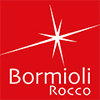Rosé has become more than just a summer staple—it’s a year-round favorite among wine lovers. Whether you’re sipping a crisp Provençal rosé on a rooftop or indulging in a deeper, fruitier rosé in the winter, the right glassware makes all the difference in enhancing its delicate flavors and aromas. But not all wine glasses are created equal when it comes to rosé. From stemless to flutes, let’s explore the ultimate guide to rosé glasses and how they can elevate your drinking experience.
Rosé wines come in a wide range of styles—from light and floral to bold and structured. Unlike red wines, which need large bowls for aeration, or white wines, which require smaller openings to concentrate aromas, rosé falls somewhere in between. The right glass allows the perfect balance of oxygenation and aroma retention, ensuring you taste every nuanced note.
The glass you choose impacts how the wine hits your palate, how much air it interacts with, and even how its aromas are released. A well-chosen rosé glass enhances the crispness, fruitiness, and floral notes that make this wine so beloved.
The Universal Rosé Wine Glass
The best all-purpose rosé glass is a hybrid between a white wine glass and a red wine glass. It features a slightly tapered bowl to concentrate aromas while maintaining enough room for aeration. This shape enhances the delicate fruit and floral notes in rosé without overpowering them.
Best for: Light to medium-bodied rosés, including classic Provençal rosés and Pinot Noir rosé.

Spazio 14 oz. Medium White Wine Glass
Stemmed vs. Stemless Rosé Glasses
- Stemmed glasses keep your hands away from the bowl, preventing the wine from warming too quickly. These are ideal for serving crisp, refreshing rosés that should stay chilled.
- Stemless glasses offer a more modern, casual aesthetic. While stylish, they can warm the wine faster due to direct hand contact with the glass, which might not be ideal for lighter rosés. However, they work well for fuller-bodied rosés served at slightly warmer temperatures.
Best for: Casual gatherings and outdoor sipping. Stemmed glasses are preferable for maintaining temperature, while stemless are great for informal settings.

Electra 12.75 oz. Stemless Wine Glass
The Flute for Sparkling Rosé
If you’re indulging in a sparkling rosé, such as a rosé Champagne or Prosecco, a flute is the best choice. The narrow shape helps preserve the bubbles while directing the wine’s delicate fruit and floral aromas to your nose.
Best for: Sparkling rosé wines, Champagne, and Prosecco Rosé.

Spazio 7.25 oz. Sparkling Wine Flute
The Coupe Glass – A Stylish Alternative
For those who prefer a vintage aesthetic, the coupe glass—known for its wide, shallow bowl—is an option for serving sparkling rosé. While it doesn’t preserve bubbles as well as a flute, it adds an element of glamour to your presentation.
Best for: Rosé cocktails or Champagne-style rosés when style is a priority over bubble retention.

Bartender 8.5 oz. Novecento Cocktail Coupe
Pairing Rosé with Food
The right glass is only part of the experience—pairing rosé with the right food enhances its versatility.
Here are a few top pairings:
- Provençal Rosé + Fresh seafood, salads, and goat cheese.
- Fruity Rosé + Grilled chicken, charcuterie, and Mediterranean dishes.
- Sparkling Rosé + Sushi, fried foods, and creamy cheeses.
Rosé is more than just a seasonal favorite—it’s a versatile wine that deserves the right glassware to fully appreciate its elegance. Whether you opt for a universal rosé glass, a flute for sparkling, or a stemless option for casual enjoyment, the key is choosing a glass that complements your favorite style of rosé. With the right glass in hand, you can confidently say, Rosé all day! Cheers!


